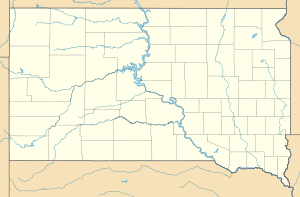During World War II, the United States Army Air Forces (AAF) established numerous airfields in Oklahoma for training pilots and aircrews of AAF fighters and bombers or as major maintenance and supply centers.

During World War II, the United States Army Air Forces (USAAF) established numerous airfields in Alabama for antisubmarine defense in the Gulf of Mexico and for training pilots and aircrews of AAF fighters and bombers.
During World War II, the U.S. Army Air Forces (USAAF) established numerous airfields in Arkansas for training fighter and bomber pilots and aircrews.
During World War II, the United States Army Air Forces (USAAF) established numerous airfields in Arizona for training pilots and aircrews of USAAF fighters and bombers.
During World War II, the United States Army Air Forces (USAAF) established numerous airfields in South Carolina for antisubmarine defense in the Gulf of Mexico and for training pilots and aircrews of USAAF fighters and bombers.
During World War II, the United States Army Air Forces (USAAF) established numerous airfields in Nevada for training pilots and aircrews of USAAF fighters and bombers.
During World War II, the United States Army Air Forces (USAAF) established numerous airfields in Montana for training pilots and aircrews of USAAF fighters and bombers.
During World War II, the United States Army Air Forces (USAAF) established numerous airfields in North Dakota for training pilots and aircrews of USAAF fighters and bombers.
Oregon World War II Army Airfields were the airfields built or repurposed during World War II for training pilots and aircrews of United States Army Air Forces (USAAF) fighters and bombers in Oregon.
During World War II, the United States Army Air Forces (USAAF) established numerous airfields in Washington for training pilots and aircrews of USAAF fighters and bombers.
During World War II, the United States Army Air Forces (USAAF) established numerous airfields in Illinois for training pilots and aircrews of USAAF fighters and bombers.
During World War II, the United States Army Air Forces (USAAF) established numerous airfields in Indiana for training pilots and aircrews of USAAF fighters and bombers.
During World War II, the United States Army Air Forces (USAAF) established numerous airfields in Kentucky for training pilots and aircrews of USAAF fighters and bombers.
During World War II, the United States Army Air Forces (USAAF) established numerous airfields in Maine for training pilots and aircrews of USAAF fighters and bombers.
During World War II, the United States Army Air Forces (USAAF) established numerous airfields in Maryland for training pilots and aircrews of USAAF fighters and bombers.
During World War II, the United States Army Air Forces (USAAF) established numerous airfields in Minnesota for training pilots and aircrews of USAAF fighters and bombers.
During World War II, the United States Army Air Forces (USAAF) established numerous airfields in New Hampshire for training pilots and aircrews of USAAF fighters and bombers.
During World War II, the United States Army Air Forces (USAAF) established numerous airfields in Pennsylvania for training pilots and aircrews of USAAF fighters and bombers.

During World War II, the United States Army Air Forces (USAAF) established numerous airfields in Virginia for training pilots and aircrews of USAAF fighters and bombers.
In Wisconsin multiple airfields were constructed and used by the United States Army Air Forces during World War II. The main purpose of these installations was for training pilots and aircrews of USAAF fighters and bombers.





